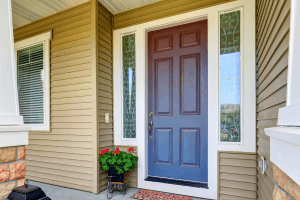The fundamentals of homeownership can span into every nook and cranny of your house. And that’s why you need to be constantly aware of things that can affect your home. Mold is one of those things that you need to be aware of so that it doesn’t lead to possible health problems. If you’re wanting to learn how to get rid of black mold, you’ve come to the right place.
Keeping a clean home doesn’t just mean picking up debris that is scattered about the floor. It goes much deeper than that. If you’ve ever noticed mold in tiny amounts throughout your home, you should be alarmed. There’s a number of symptoms that mold can cause:
- Irritated eyes
- Difficulty breathing
- Skin rashes
- Coughing
- Wheezing
These are things that could put your family’s health in jeopardy. If you’re beginning to notice some mold building upon a window in your home, the best time to act is right when you see it.
How Does Mold Develop In Your Home?
The first thing that needs to be answered is how mold even starts to develop in the first place. While there are several different things that can lead to mold, there are a few more common things that cause it:
- Humidity leading to moisture build-up
- Condensation
- Water build-up
- Excess and prolonged moisture
The purpose of windows is to keep the outdoor elements outside. They will lower the chances that moisture can get into your home. As a result of doing just that, windows are the first area that mold has a chance to gather on.
It’s normal for windows to get wet at times, but if the windows stay wet for prolonged periods of time, then mold will begin to develop. Most window companies don’t inform you that your windows should be wiped down after rainfall. Once mold begins to develop in the smallest amounts, it can rapidly turn into a bigger issue.
When mold starts to take hold, people in your home will start to feel sudden symptoms. If a member of your household has asthma, then they could be affected even more severely. Those with asthma could experience serious complications if mold isn’t taken care of right away.
One of the worst things that could happen is having to leave your home due to mold. This can sometimes be the case when a company comes to clean your mold out and require you to be out of the home until the hazard is completely taken care of.
How To Get Rid Of Mold
You’re now aware of how serious mold can be to you and everyone in your family’s health. How exactly do you get rid of it? If the mold in your home is a mild case, you can take care of it yourself before you go and instantly call a company to help you with it.
There are a couple of effective ways and things to look out for when spotting mold:
- Inspect the suspected area for discoloration. Mold comes in a variety of different colors depending on what type of mold it is. The types of mold that usually get into the house are Penicillium, Cladosporium, Alternaria, and Aspergillus. These types of mold will usually be of a dark green or brownish color. Stachybotrys mold will usually be a dark black-green color. Take a close look at each and every one of your windows and see if you spot any discoloration. If you do see any, this is a warning sign that you might have mold on them. The corners of the windows are an ideal location for mold to occur.
- If your windows are a color that makes it very difficult in spotting any mold you could use a diluted bleach solution. To do this, you’ll need to get a container and then add 1 part bleach to 16 parts of water. Get a cotton swab and then smear the mold into the solution that you just mixed. If you notice that the stain is lighter in color, but still persists after you’re done rubbing it, then there’s a good chance that it is mold. There are useful mold testing kits that you can purchase if you want to make 100% sure that it is in fact mold.
- Even though you shouldn’t be walking around the house trying to detect mold by sniffing around for it, you can typically notice the smell of mold if a room in your house doesn’t smell right. Mold has an old book type of smell to it. If you notice any musty old book smells, take a closer inspection around the area and see if you spot any mold.
- Another way to look out for mold is to leave the house for a couple of hours, ensuring all of the windows are closed and the air conditioning is off. After you’ve smelled nothing but the freshness of the outdoors, walk in the house again. Your smelling senses should be heightened, so if you notice a musty smell upon walking into the house again, then mold could be the suspect.
Confirming mold in your house is the first step to take towards a cleaner, mold-free home. Cleaning mold out of your home isn’t comparable to cleaning something as small as dust. If you don’t get rid of the mold properly, mold spores can spread around your home and multiply. Mold will then start to get into areas wherever the spores have invaded.
There are a couple of things you’ll require when you’re ready to get started on removing mold:
- Good cleaning gloves
- Protective goggles
- N-95 respirator
If you have a bunch of newspapers lying around, cover the surrounding areas up so that mold won’t get all over the place. You’ll also want to move around the furniture if there’s any in the area where your suspected mold is. Doing this will lessen the chances of mold spores getting everywhere.
Spray Some Warm Water On The Entire Area
Get a spray bottle and fill it with warm water. Spray the entire area where the mold is located. You might be wondering why you’re spraying mold when mold tends to increase in areas that are moist, but spraying the mold is to prevent any of the mold spores from moving about. The window should be fairly drenched.
Start Wiping The Mold
After you’re done spraying the window, get some dishwashing liquid and add it to some warm water in equal parts. Get some paper towels and wipe the area with the solution. A clothed should work for this step, as well. After you wipe it down, give it a few seconds to see if it has disappeared. Mold tends to come right back after you’ve wiped the area. If this is the case, you’ll have to add some more elbow grease to your wiping. If that still doesn’t work, then you might have to get a scraper to get rid of the mold. After you’re done scraping the mold, get a paper towel, and wipe up the mold.
All of your paper towels need to be disposed of in a secured garbage bag. If you used a scraper or any other tools in the process, you need to also put those tools into a solution that has bleach in it to eliminate mold spores.
Spray Bleach In The Area
After that, get your spray bottle again and add equal parts of water and bleach. Spray the entire area that you just wiped the mold off of. Give the bleach solution a few moments to soak into the area so that the mold spores will be killed. Wipe the solution away with a rag and then throw it in the garbage.
Ensure Everything Is Dried
For this part, you can now use a clean rag to give the entire area a good dry. Pop open the window a bit to let the air get a chance to dry it. If you don’t want to open your window or if the air isn’t flowing that day, you can also use a fan or hairdryer to speed things up. The heat has the ability to prevent mold, so the hairdryer strategy is an efficient idea.
This overall cleaning strategy is good for homes that have PVC windows installed in them. If your home has wood windows and the mold has gotten far into the grain, the above steps won’t work as well.
How To Clean Mold Off Of Wood Windows
For those that want to learn how to remove mold from wood windows, the process is a bit different. For wood windows that have really severe issues with mold, you might have to sand them down all the way to the finish. Oxalic acid will then need to be used to bleach the areas. You can use a toothbrush or a regular cotton swab to wipe it down. After the area, you’ve just wiped down begins to turn to a brighter color, get some warm water, and give the area a good rinse.
You’ll want to give the area a good chance to dry off before you start to stain the wood again. After you’re done staining, apply some varnish to the wood so that it’ll look the same as the wood that wasn’t subject to the mold infestation.
Preventing Window Mold
Preventing mold in your home can completely be a tedious and difficult task. It’s almost impossible to effectively prevent every part of your house from being free of the pesky mold. Even though mold does have a chance of recurring again after you’ve just cleaned it up, there are some things you can do in order to prevent it from happening.
- Getting better ventilation – If you notice mold growing throughout your bathroom, there’s a good chance that the ventilation in there isn’t ideal. Moisture needs a way to escape, especially when the shower is causing a lot of it. Getting a simple ceiling fan is a good way to do that.
- Invest in HVAC – When the environment is cooler, mold has a harder chance to grow. The temperature that mold grows at is around 70 degrees Fahrenheit or more. If you keep your environmental temperature in your home under that limit, mold won’t grow and spread as much.
- Look around your home for leaks – Take a close inspection of your windows to see if there’s any excess moisture on them. Look at the nearby walls surrounding the window and look for the same thing. If you start noticing that the color on your walls is getting darker, there could be some mold growing underneath them. For something like this, the best solution is to get a company to take care of it.
- Run a dehumidifier – Using a dehumidifier is a good technique that will lower the moisture in your home. If it’s extremely humid or rainy during the season, keep a dehumidifier running around 16 hours a day, especially in rooms that are prone to mold.
- Routinely clean your home – This one should go without saying, but giving your windows a good clean on a routine basis will lower the chances of mold growing on them in the first place. Use a strong disinfectant that contains bleach and then dry all of the surfaces, ensuring that no moisture or water remains.
Mold is the last thing that you want to deal with in your home. The health risks due to mold can negatively impact your life in many ways. Keep a keen eye on your windows and any area that moisture can get in. Trying out all of this advice will help ensure that your home remains free from the mold so that you and your family can live healthier lives.

